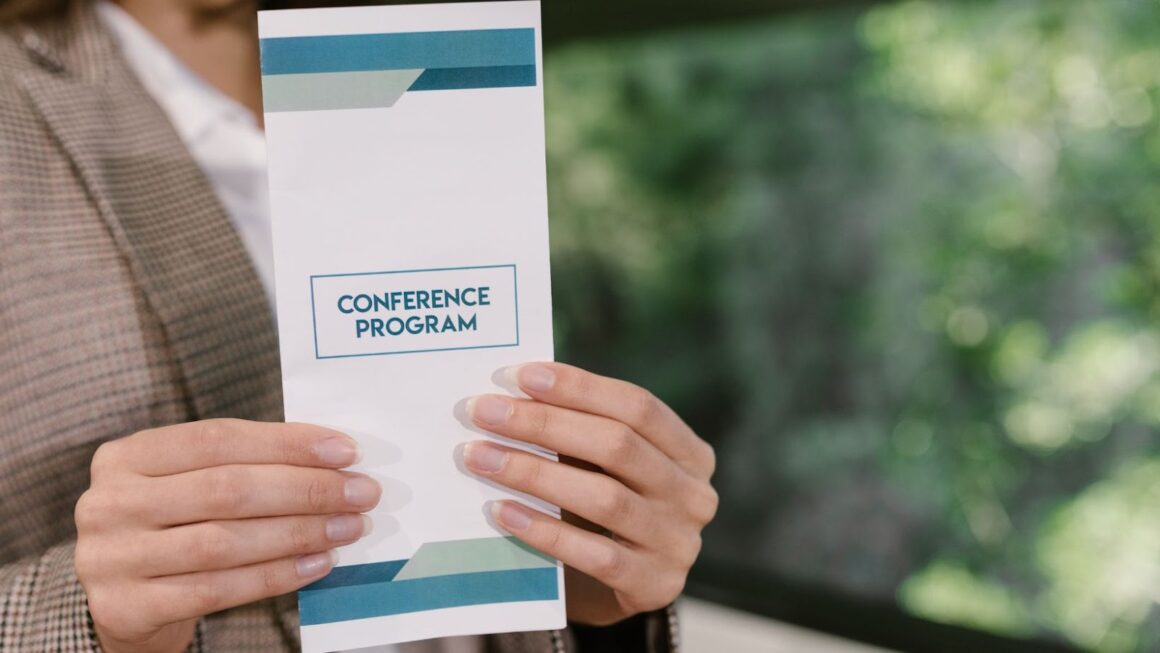Trade shows and events give a special chance to businesses for displaying their products, making connections with others in the industry, and interacting with possible customers. In this lively setting, printed stuff can greatly help improve a company’s presence and make sure that communication goes well. From attractive banners to informative brochures, using printed materials in the right way is crucial for increasing involvement and leaving a strong memory on people who come by.
Creating a Strong First Impression
The initial perception typically decides whether visitors will approach a booth or continue walking by it. Therefore, big printed materials like banners and posters are crucial for attracting attention. If there’s an eye-catching banner that has great visual quality and clearly shows the brand along with a brief message, it could make people stop and look closer. In booths that are in a big room with many other booths, a lot of them use bright colors, interesting pictures and place things so as to be eye-catching. To reinforce that impact with a tactile takeaway, hand-to-hand touchpoints like branded custom silicone wristbands work as instant identifiers and conversation starters, supporting access control, tiered perks, and post-show recall.
Pop-up displays and pull-up banners are well-liked because they’re portable and simple to assemble. They deliver a professional look and can be personalized for every business’s unique selling point or branding message, making them an ideal choice for events like trade shows. Companies can reuse these displays repeatedly by using strong materials that last long, guaranteeing continuous brand visibility on many occasions.
Informative Brochures and Flyers
When people are attracted to a booth, brochures and flyers help in giving detailed information about products or services. These printed materials need to be good-looking and simple to understand, having important details that attendees can take along with them. Brochures and flyers function as solid memory aids for the company’s offerings, potentially helping future. Customers remember things more easily once they have left an event.
Laminators can significantly enhance the durability and presentation of printed materials. By applying a protective layer of plastic over printed documents, laminators make brochures, posters, and business cards more resistant to wear and tear, moisture, and smudges.
Business Cards
In the era of digital life, business cards continue to be a necessary item for networking. Business cards make it easy to share your contact details and create a human connection.

Good quality business cards that have been professionally designed showcase the brand of an organization while also leaving behind positive feelings about it. Putting a QR code on the card can allow for fast linking to a website or LinkedIn page, connecting both the print and digital worlds.
Interactive Print Materials
For uniqueness, businesses may use interactive features in printed things. Augmented Reality (AR) has the ability to make normal brochures and flyers into exciting, multi-media events. When people scan these printed materials with their smartphones, they can see videos or 3D models and interact with the content for better comprehension about what’s being offered by your business.
Interactive print materials, like brochures with augmented reality or touch-sensitive displays, can grab attention and improve involvement by providing an unforgettable experience. This creative method might help a business stand out among rivals and create excitement at the event.
Promotional Giveaways
Giveaways for promotion, like pens with brand logos, notepads or tote bags are useful things that people can continue to use even after the event. These items have the company’s logo and contact details on them which helps in remembering brands. If a giveaway is of good quality, it may make an attendee feel positive about the brand and motivate them to remember more about the business.
Consistent Branding Across Materials
For printed materials related to trade shows and events, it is important to maintain a consistent style. Every material such as banners, brochures or business cards should carry similar branding elements like logos, color patterns and fonts. This uniformity assists in strengthening brand recognition while also providing an organized, professional look.
Follow-up and Continued Engagement
Printed materials such as thank-you cards or special follow-up letters can be used to increase personal connection and support the process of turning leads into customers.

Post-event mailings are a good time to include printed materials that can serve as reminders of the conversation and offer more information to help potential customers move further along the sales funnel.
Conclusion
To conclude, printed materials are very important for making a business noticeable and getting involved at trade shows and events. They help to create a good first impression, give detailed information, make networking easy, and offer long-lasting reminders about the company’s products or services. By putting money into good quality printed items that are nicely designed and keeping branding consistent throughout these events, businesses can make the most out of their time there to accomplish what they want. In this world that is becoming more digital, the real existence of printed materials offers a special and successful method to link with possible clients and associates.

